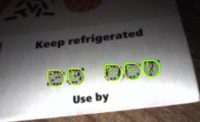Automation
10 Artificial Intelligence Innovations Impacting the Packaging Industry in 2021
As we enter the second half of 2021, we can expect AI-driven innovation to have a major impact on packaging design and production.

As part of AI innovation, companies are using machines and algorithms to create smarter packaging solutions. The use of 3D printing is being used increasingly in industrial applications, and it's not only designers who will be impacted by these new technologies — the entire supply chain will also need to adapt. Here are 10 of the many innovations that will impact the packaging industry:
1) AI will generate packaging prototypes in 3D space.
AI is the future of development and design because it can be programmed to make prototypes without human input. The AI will generate a prototype in three dimensions; if the product needs assembly then you have to program that into the algorithm. It is not as easy as just letting an AI loose on your CAD files with no instructions.
2) AI will design a package that is tailored to the product’s needs.
This technology is already being used in some cases where designers are using virtual reality and augmented reality headsets to design packaging. With more computing power, AI will be able to visualize an algorithmically designed package perfect for specific products.
3) AI will create packages of different shapes and sizes for specific products.
The structure of packages can already be customized, but artificial intelligence will allow for a wider range of possibilities. AI could produce packages of different shapes and sizes to fit specific products, like cereal or hot dogs. When making packaging in unique shapes, specific machine parts need to be created with CNC milling. Customization is key in packaging because it builds customer loyalty by making the package feel more personal. This customization also creates trust in the company that produces the product as it has gone to the effort to create specialized packaging just for you.
4) Packages will include RFID tags or QR codes to communicate and reorder groceries.
The RFID tags and codes will need to be incorporated into the packaging design to enable smart feature compatibility. This added element could increase packaging costs but might need to be considered in the design phase.
5) AI-driven automation will help companies reduce manufacturing costs by directing and controlling robots.
Machines need to be accurately programmed with precise instructions in the manufacturing process, but AI-driven automation is capable of performing tasks without precise instructions. AI is also used for quality control. The ability of machines to self-diagnose problems with a system or component prior to human intervention can lead to improved efficiency as well as decreased downtime. This could potentially lead manufacturers to produce more flexible products in smaller batches that are personalized based on each customer’s specifications. The flexibility offered through customization would allow customers greater choice while ensuring product consistency across all orders, which should improve customer satisfaction levels.
6) Packages will sense any tampering and alert authorities accordingly.
This will help protect companies from misuse of their products, for example, the sale of stolen goods or counterfeit content. The technology is also expected to help detect when packages have been dropped in transit, which has a high risk of damaging them.
7) Artificial intelligence will optimize production lines and increase the efficiency of packaging processes.
This way, companies can generate higher profits by reducing labor costs and increasing output. Machines with AI are also more precise than humans when it comes to processing data quickly and efficiently. Some studies show that they only need around 20% as much time to learn something new compared to a human counterpart. In this sense, automation is already happening, but in an effortless fashion for many people — primarily because there's not enough awareness about the issue at play here: whether or not artificial intelligence should replace human jobs.
8) Sustainable practices will be at the forefront of packaging manufacturing with AI.
AI will help the packaging industry accelerate its transition to sustainable practices by enhancing supply chain and inventory management, optimizing distribution routes, and tracking products during transit. AI can predict demand and consumption and streamline the manufacturing process. This reduces waste during manufacturing. AI can also generate alternative packaging solutions that reduce complexity and required resources.
9) Artificial intelligence will prevent downtime with preventative maintenance.
The number-one reason for packaging machine downtime is unplanned maintenance. Machines malfunction because of wear and tear, or when they are not used correctly over time. This can lead to lost hours in a week that cannot be recovered due to insufficient human labor at the factory level. Artificial intelligence could help identify problems before they occur, helping prevent downtime from occurring.
10) The use of augmented reality (AR) and virtual reality (VR) headsets will allow consumers to see what's inside the package without opening it.
Virtual reality will soon be a normal part of the customer experience and packaging design process for many companies, as it becomes more affordable for small businesses to invest in immersive VR headsets like Oculus Rift or HTC Vive. This technology is currently being implemented at major retailers such as Target, Walmart, and Home Depot who have experimented with incorporating VR into various aspects of their business, from training new employees in simulated store layouts to helping customers visualize what living room furniture would look like in their house. As this technology becomes mainstream within these industries, we can expect that other sectors of retail will follow suit over the next few years.
Looking for a reprint of this article?
From high-res PDFs to custom plaques, order your copy today!






